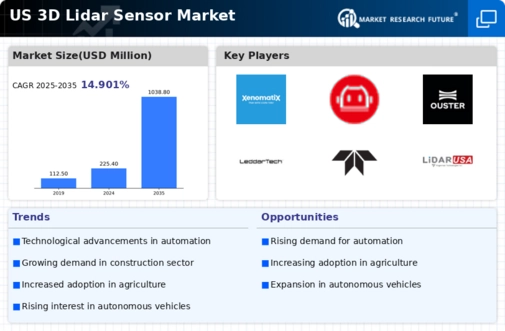The US 3D Lidar Sensor Market is a rapidly evolving field that has garnered significant attention due to its applications across various industries, including automotive, aerospace, construction, and surveying. As the demand for advanced sensing technologies increases, the competition within this market is becoming fierce. Companies are striving to innovate and provide high-quality, reliable, and efficient Lidar solutions that can meet the specific needs of their customers. The market dynamics are influenced by factors such as technological advancements, regulatory developments, and evolving consumer preferences.
Companies are continually working to enhance their product offerings and expand their market reach, which translates into a competitive landscape that is characterized by agility and responsiveness to industry trends.XenomatiX has carved a niche for itself in the US 3D Lidar Sensor Market with its robust offerings that emphasize accuracy and reliability. The company's strength lies in its proprietary Lidar technology that is specifically designed for various applications, ranging from autonomous vehicles to industrial automation.
XenomatiX has established a strong presence in the US by focusing on delivering high-resolution 3D data and exceptional performance in challenging environmental conditions. The company's ability to integrate its sensors into existing systems and provide tailored solutions resonates well with the needs of diverse sectors. Furthermore, XenomatiX’s commitment to innovation and customer satisfaction has solidified its reputation as a reliable player within the competitive landscape of the US Lidar market.RoboSense has emerged as a prominent player in the US 3D Lidar Sensor Market, catering to a broad range of applications, including self-driving vehicles and smart city solutions.
With its advanced Lidar technology, RoboSense focuses on delivering high-performance and cost-effective products, which appeal to clients looking for reliable sensing solutions. The company has a significant market presence, bolstered by collaborations with various automotive and tech firms aimed at developing autonomous driving capabilities.
RoboSense's strengths include its ability to offer integrated Lidar solutions that encompass hardware and software components, facilitating seamless implementation for users. The company has also pursued strategic partnerships and potential mergers that enhance its capabilities and market share within the US, allowing it to navigate the competitive landscape effectively and position itself as a leader in Lidar sensor technology.












